Overview
For thousands of years, the Chemung Valley witnessed a long record of human activities in the region. Well-worn trails followed the Chemung River providing access to adjacent valleys, Finger Lakes, Bays, and the Great Lakes. These Chemung corridors crossed the Native American homelands of the Seneca Nation, Delaware Nation, and Delaware Tribe of Indians. The story of the Chemung Valley's ancient past has been recorded by Native Americans, historians, and archaeologists. Recent projects, such as the Horseheads Water Line Replacement Project, funded by a FEMA grant, have provided new information to help tell this story. The Public Archaeology Facility at Binghamton University participated in many of the projects that helped.

The First People in the Chemung Valley
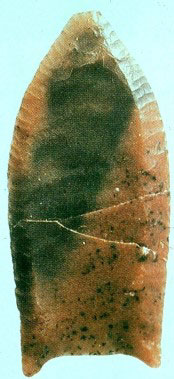
The first people to reach the Chemung Valley lived a highly mobile life in a harsh environment, often traveling hundreds of miles each year. Along the way, they hunted large animals, used hides for clothing and dwellings, and collected materials to make tools. It is likely they included migratory waterfowl, fish, and plants in their diet. Archaeologists refer to this time as the Paleoindian period, which lasted until about 8,000 B.C.
Fluted projectile points (or spearheads) are one of the characteristics of the period, but only a few isolated finds are known from Chemung County. We do not know if people camped in the valleys and uplands or just hunted here. When the climate changed, many of the large mammals became extinct, and the first peoples adapted their lifestyles.
Seasonal Land Use
After 8,000 B.C., Chemung County's valleys became more stable. People were able to remain within valleys or around lakes throughout the year, moving their camps as the seasons changed. During seasons of plenty, households would join together to help collect and preserve food. These times were usually when fish migrate and spawn in the spring, and when deer congregate in the late fall. When resources were more dispersed, large camps would break into smaller groups that foraged over large areas collecting whatever their household needed (e.g., fish, berries, reeds for basket- making, stone for making tools).
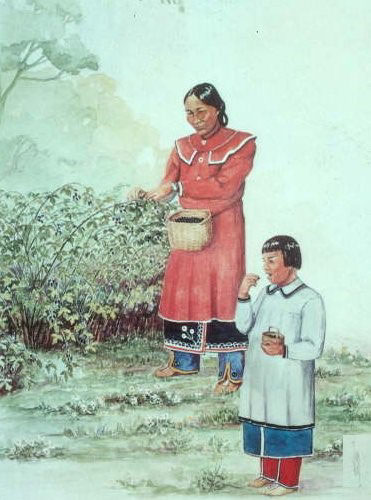
By 4000 B.C., hunter-gatherers established numerous camps in the Chemung Valley. People made their projectile points from local materials and used different styles. Some points were narrow with straight stems while others were wider with side notches. In camps, they made and sharpened stone tools, used scrapers for cleaning hides, and bone awls to sew the hides into clothing. Stone axes were used for woodworking, and stone weights for catching fish in nets. Individuals with a unique knowledge of the landscape would collect edible and also medicinal plants. Some materials, like those made from wood, leather, and reeds, were fashioned into cooking vessels or baskets; these items are rarely preserved in our soils.
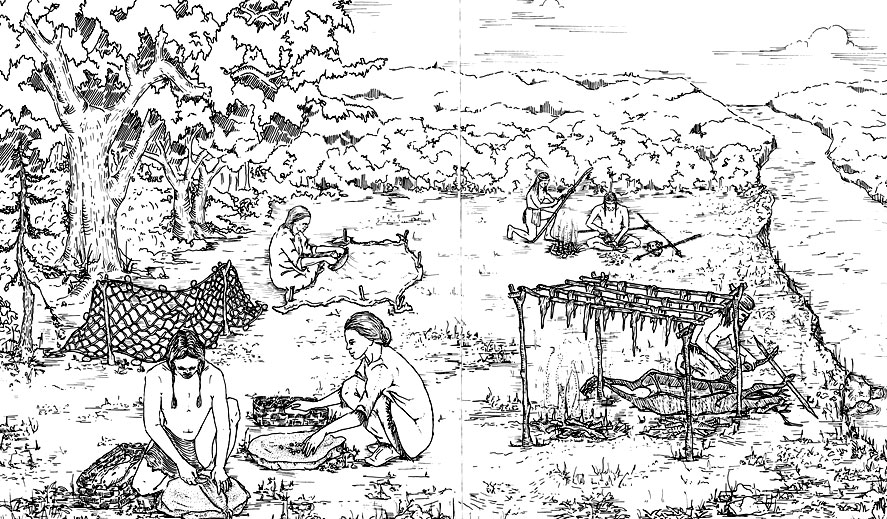
Migration or Trade?
Significant changes happened by 1500 B.C. People began using broad-bladed hunting tools made from non-local stone (jasper and rhyolite), and cooked in stone bowls made from steatite (soapstone). These materials were all from southern regions. Some researchers argue that trade networks operated while others say a warming climate pushed southern groups into our cooler northern valleys. Even more dramatic changes occurred c. 500 B.C. Evidence of these changes include ceremonial items common to the Ohio and Illinois Valleys appearing in New York.
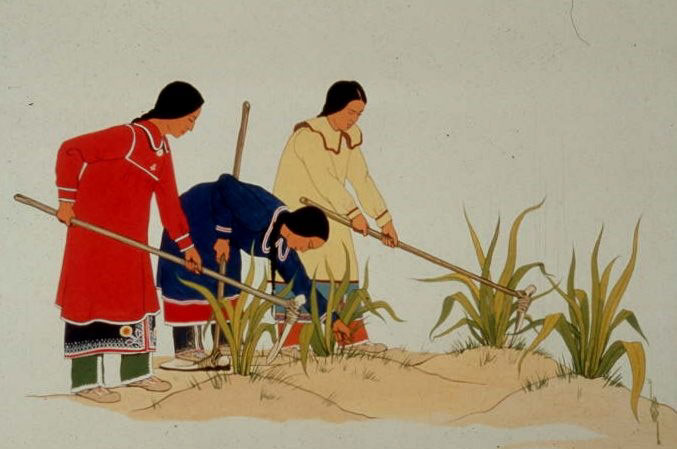
Agriculture Begins
Beginning c. A.D. 900, people began to plant maize, beans, and squash (known as The Three Sisters) in the valleys of New York. Groups settled into villages near their fertile fields. Villages often contained one or more longhouses where up to three related families lived. Decorations on clay pottery often defined different cultural groups, such as those living in the Chemung Valley and those living in the valleys of Pennsylvania and beyond. Many of the towns within Chemung County, such as Ashland, Chemung, and Horseheads, contain buried traces of these early agricultural villages. During this period of village life, the Haudenosaunee (Iroquois) Confederacy formed, providing an alliance among all who sheltered under the "Great Tree of Peace." This peace shattered during the American Revolution.
After A.D. 1600 in the Chemung Valley
The name "Chemung" comes from an Unami Delaware place name; the Munsee Delaware used the name "Wilawana" for the same place in the valley. Both mean "place of the horn" or "big horn," possibly referring to the discovery by Native Americans of a mastodon tusk in the early 1770s.
The Chemung Valley was home to many Native peoples when Europeans arrived. The Seneca Nation of the Haudenosaunee (Iroquois Confederacy) and the Delaware shared the valley with refugee communities from the south. These communities dotted the valley from Tioga Point to Big Flats and beyond. Groups included Shawnee (Ohio Valley), Tuteloes and Saponies (Piedmont region), Mahicans (upper Hudson Valley), Mesquakies or Foxes (Great Lakes), Nanticokes and Conoys (Chesapeake Bay), and Chickasaws and Cherokees from farther south. The Tuscarora Nation from North Carolina was adopted as the sixth member nation of the Haudenosaunee in 1722. Delaware and Mesquakie villages, like Chemung, New Chemung, and Newtown, played a significant role during the American Revolutionary War.

"Consultation between Indian Nations, governments, universities, and developers protects the historic locations of our ancestors from destruction. The consultation process brings many of us back to our original homelands. There has been so much death across these lands; we fought, as many Indian people did, to protect our families and homes. When I return to this region, I feel the pull of my ancestors, I feel the familiarity of being 'home.' These are powerful feelings; something I never expected to feel in a place I had never been. It is my greatest hope in the future many of my Delaware people can visit these places where we once lived so they may feel those same feelings of familiarity and belonging, of coming home." Nekole Alligood, Delaware Nation.
Chemung Valley in the Revolutionary War
On August 13, 1779 the Sullivan-Clinton Campaign attacked the British allied Delaware Village of Chemung, near present day Lowman, NY. The Delaware had already abandoned the village except for 40 warriors who waited on a hill to am- bush the advancing Continental troops. The first casualties of the Campaign occurred at the Chemung ambush site. This engagement was a prelude to the Battle of Newtown located at the base of the Newtown Battlefield State Park.
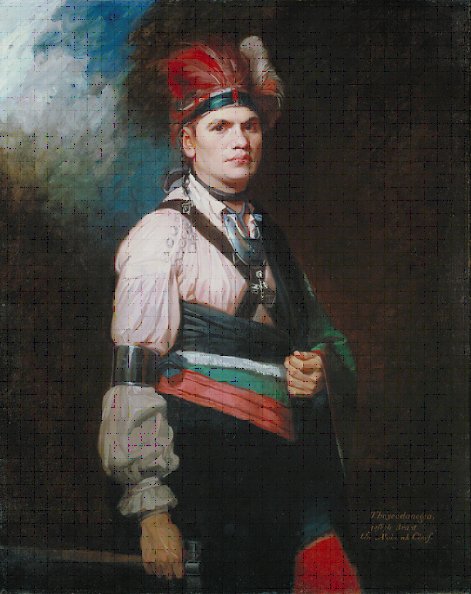
To prepare for the Battle of Newtown, British commander Major John Butler and Mohawk warrior Captain Joseph Brant quickly built a wooden barrier as a defense against the Continentals. An ambush similar to the one at Chemung failed, and the British retreated to Fort Niagara. Local histories note that the Continentals euthanized sick and disabled pack animals at a spot near the current Village of Horseheads. Native peoples later found the decaying skulls, and called the spot, "the Valley of the Horses," later shortened to "Horseheads." The aftermath of the war prompted this Seneca statement:
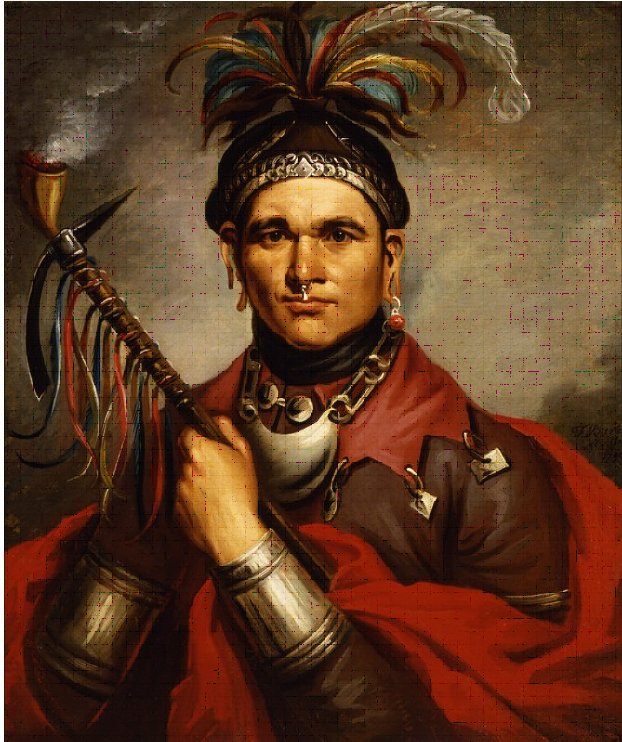
"When your [Washington's] army entered the country of the Six Nations we called you the Town Destroyer; and to this day, when that name is heard, our women look behind them and turn pale, and our children cling close to the necks of their mothers. Our councilors and warriors are men, and cannot be afraid; but their hearts are grieved with the fears of our women and children, and the desire that it may be buried so deep as to be heard no more." Cornplanter, Seneca Chief (1790)